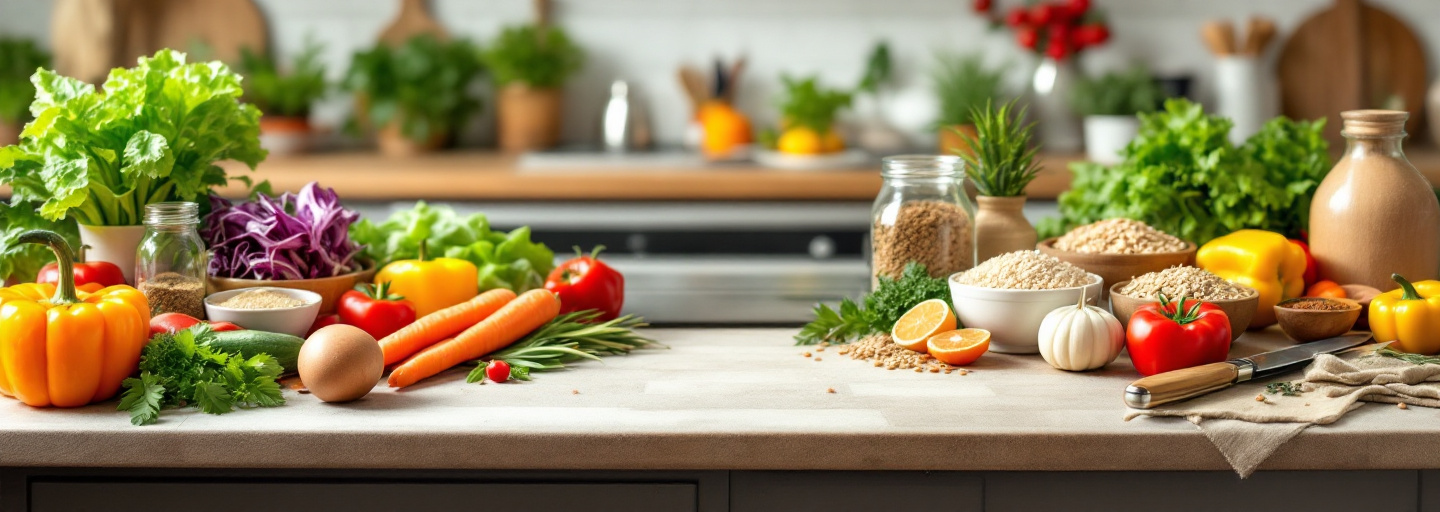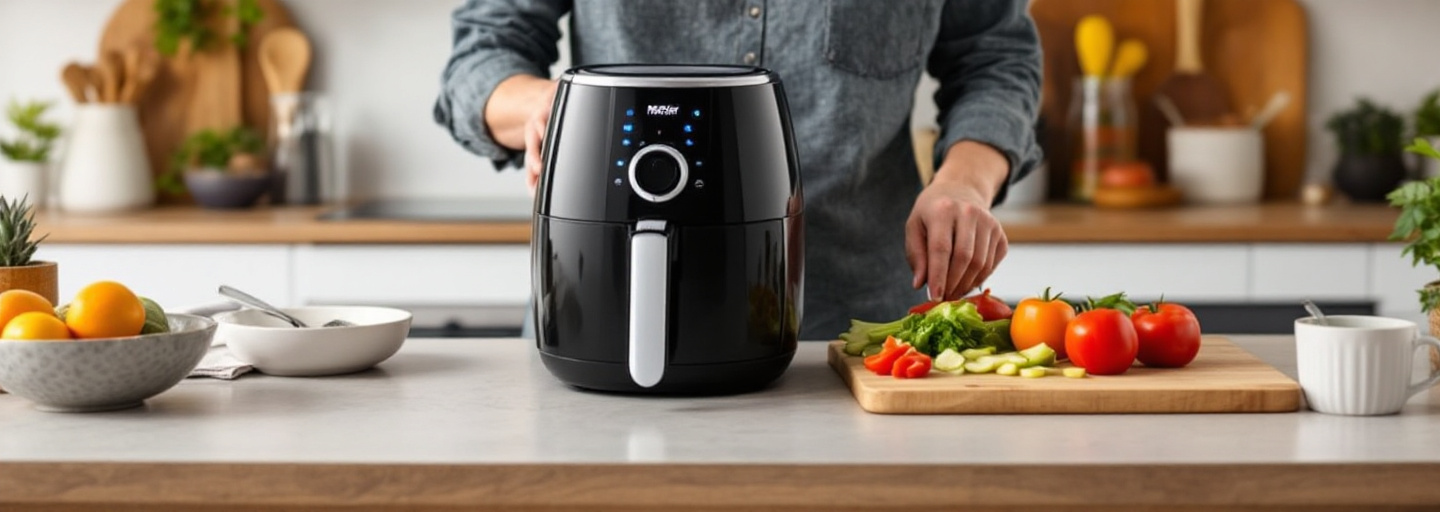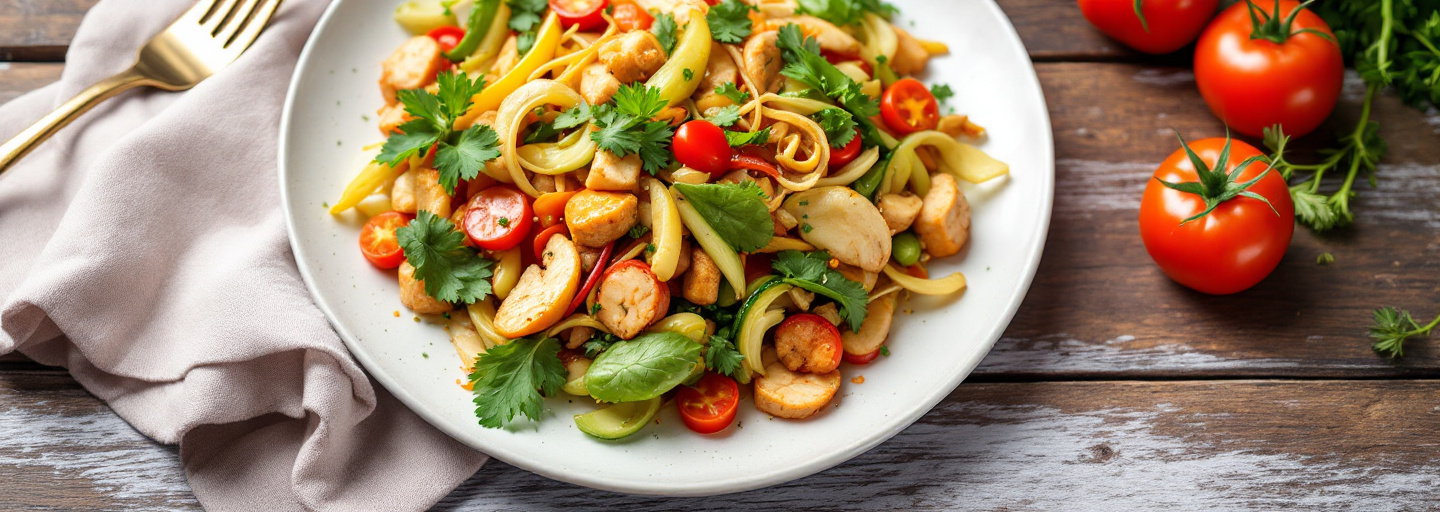Why Quick and Healthy Meals Matter
Cooking at home is one of the best ways to eat healthier, but for beginners, it can feel overwhelming. Between busy schedules, unfamiliar ingredients, and the fear of messing up a recipe, many people default to takeout or processed foods. The good news? By focusing on quick, nutritious meals, you can enjoy a balanced diet while minimizing time spent in the kitchen.
Quick, nutritious meals help you maintain a balanced diet without spending hours in the kitchen. When you rely on simple, fresh ingredients and easy cooking techniques, you can create meals that are both satisfying and good for you. Plus, cooking at home gives you control over what goes into your food—less salt, fewer preservatives, and more wholesome nutrients.
These fresh ingredients not only enhance flavor but also provide essential nutrients, making them a staple in your healthy cooking arsenal. And when you combine these with smart pantry staples—like olive oil, spices, and canned beans—you can whip up a healthy dish in no time. The key is to keep things simple: focus on meals that require minimal prep and use just a few ingredients.
If you’re new to cooking, starting with quick, beginner-friendly healthy recipes can build confidence and make healthy eating a habit. With the right approach, you’ll see that making nutritious meals at home is not only easy but also enjoyable.
Essential Ingredients for Quick and Healthy Cooking
Stocking your kitchen with the right ingredients makes healthy cooking effortless. Having these pantry staples allows for quick meal assembly, ensuring you can whip up something nutritious even on busy days.
Must-Have Fresh Ingredients
These fresh ingredients not only enhance flavor but also provide essential nutrients, making them a staple in your healthy cooking arsenal. Keep these essentials in your fridge:
Vegetables : Bell peppers, spinach, carrots, and zucchini cook quickly and add nutrients to any dish.
Fruits : Bananas, apples, and berries work for snacks, smoothies, or even salads.
Lean Proteins : Chicken breast, tofu, eggs, and Greek yogurt provide protein without excess fat.
Dairy or Dairy Alternatives : Cheese, milk, or plant-based options like almond milk enhance flavor and texture.
Pantry Staples for Fast Meals
A well-stocked pantry ensures you can always put together a meal, even when fresh ingredients run low. Some essentials include:
Whole Grains : Brown rice, quinoa, and whole-wheat pasta cook quickly and provide lasting energy.
Canned Goods : Beans, chickpeas, and diced tomatoes are perfect for soups, salads, and stir-fries.
Healthy Fats : Olive oil, nuts, and seeds add flavor and essential nutrients.
Spices and Herbs : Garlic powder, cumin, paprika, and dried basil make simple meals taste gourmet.
Choosing Ingredients That Last
To minimize waste, pick ingredients with a longer shelf life. Root vegetables like sweet potatoes and onions, frozen fruits and veggies, and vacuum-sealed proteins stay fresh longer. With these essentials, you’ll always have what you need to cook a quick, healthy meal.
Time-Saving Cooking Techniques for Beginners
Cooking doesn’t have to be a time-consuming chore. With the right techniques, you can prepare healthy meals quickly and efficiently—even if you’re new to the kitchen.
Quick and Easy Cooking Methods
Some cooking techniques are naturally faster and more beginner-friendly than others. Here are a few that will help you get meals on the table in no time:
Stir-Frying : This method cooks food quickly over high heat, making it perfect for vegetables and lean proteins. A simple stir-fry with chicken, bell peppers, and soy sauce takes less than 15 minutes.
Steaming : Steaming preserves nutrients and requires minimal effort. Toss broccoli, carrots, or fish into a steamer basket, and they’ll be ready in under 10 minutes.
Roasting : While roasting takes a bit longer, it’s mostly hands-off. Chop vegetables, drizzle them with olive oil, and let the oven do the work.
One-Pan Cooking : Dishes like sheet pan meals or skillet dinners reduce cleanup and simplify the cooking process.
Meal Prepping for Faster Cooking
Implementing meal prep strategies can streamline your cooking process and save valuable time:
Chop ingredients in advance : Pre-cut vegetables and store them in airtight containers for quick use.
Batch cook proteins : Grill or bake chicken, tofu, or beans ahead of time so they’re ready to add to meals.
Make extra portions : Cook double the amount and refrigerate leftovers for another meal.
Using Kitchen Tools to Speed Things Up
The right tools can make cooking faster and more efficient:
Air Fryer : Cooks crispy vegetables, proteins, and even whole meals in minutes with little to no oil.
Slow Cooker : Prepares meals while you go about your day—just toss in ingredients and let it cook.
Microwave : Great for steaming vegetables, reheating leftovers, or even cooking grains like quinoa.
By combining these techniques, you’ll be able to cook healthy meals in under 30 minutes with minimal effort.
Easy 30-Minute Recipes for Beginners
Cooking a healthy meal doesn’t have to mean spending hours in the kitchen. With the right recipes, you can whip up something nutritious and delicious in under 30 minutes—even if you’re a beginner. Here are three simple recipes that require minimal ingredients and effort.
1. Quick Veggie Stir-Fry
A stir-fry is one of the easiest meals to make, and it’s packed with flavor and nutrients.
Ingredients:
1 cup bell peppers (sliced)
1 cup broccoli florets
½ cup carrots (sliced)
1 cup tofu or chicken (cubed)
2 tbsp soy sauce
1 tbsp olive oil
1 tsp garlic (minced)
1 tsp ginger (grated)
Instructions:
Heat olive oil in a pan over medium-high heat.
Add garlic and ginger, sauté for 30 seconds.
Toss in tofu or chicken, cook for 5 minutes until golden.
Add vegetables and stir-fry for another 5 minutes.
Pour in soy sauce, mix well, and cook for 2 more minutes.
Serve over brown rice or quinoa.
Tip: Swap tofu for shrimp or add cashews for extra crunch.
2. Mediterranean Chickpea Salad
This no-cook salad is refreshing, protein-packed, and perfect for busy days.
Ingredients:
1 can chickpeas (drained and rinsed)
1 cup cherry tomatoes (halved)
½ cucumber (diced)
¼ red onion (sliced)
¼ cup feta cheese (crumbled)
2 tbsp olive oil
1 tbsp lemon juice
1 tsp dried oregano
Salt and pepper to taste
Instructions:
In a large bowl, combine chickpeas, tomatoes, cucumber, and red onion.
Drizzle with olive oil and lemon juice.
Sprinkle oregano, salt, and pepper. Toss well.
Top with feta cheese and serve.
Tip: Add avocado or grilled chicken for extra protein.
3. One-Pan Garlic Butter Salmon & Veggies
A simple, flavorful dish that requires just one pan for easy cleanup.
Ingredients:
1 salmon fillet
1 cup zucchini (sliced)
½ cup cherry tomatoes
1 tbsp butter
1 tsp garlic (minced)
½ tsp paprika
Salt and pepper to taste
Instructions:
Preheat oven to 400°F (200°C).
Place salmon and veggies on a baking sheet.
Melt butter and mix with garlic, paprika, salt, and pepper.
Drizzle over salmon and veggies.
Bake for 15 minutes until salmon is flaky.
Tip: Swap salmon for chicken breast or tofu for a different twist.
| Recipe | Preparation Time | Cooking Time | Total Time |
|---|---|---|---|
| Quick Veggie Stir-Fry | 5 minutes | 12 minutes | 17 minutes |
| Mediterranean Chickpea Salad | 10 minutes | 0 minutes | 10 minutes |
| One-Pan Garlic Butter Salmon & Veggies | 5 minutes | 15 minutes | 20 minutes |
This table provides a quick overview of the preparation and cooking times for each recipe, helping you plan your meals efficiently.
These beginner-friendly healthy recipes prove that healthy meals don’t have to be complicated. With just a few ingredients and simple steps, you can enjoy a nutritious meal in no time.
Final Tips for Making Healthy Cooking a Habit
Cooking healthy meals isn’t just about following recipes—it’s about building habits that make nutritious eating effortless. Here are a few ways to stay consistent and enjoy the process.
Plan Ahead for Success
A little planning goes a long way. Set aside a few minutes each week to decide what you’ll cook. Keep a list of go-to meals and rotate them to avoid boredom. Having a stocked pantry with essentials like whole grains, canned beans, and spices ensures you’re always prepared.
Experiment with Flavors and Ingredients
Healthy eating doesn’t have to be repetitive. Try new herbs, spices, and ingredients to keep meals exciting. If you love a dish, tweak it with different proteins or vegetables. For example, swap chicken for tofu in a stir-fry or add avocado to a salad for extra creaminess.
Keep It Simple and Enjoyable
You don’t need complicated techniques or fancy equipment to cook well. Stick to easy methods like roasting, steaming, and stir-frying. Most importantly, have fun with it—cooking should feel rewarding, not stressful.
Establishing consistent habits will make nutritious cooking feel more intuitive over time. The more you practice, the easier it gets, and soon, whipping up a nutritious meal in under 30 minutes will feel effortless.












